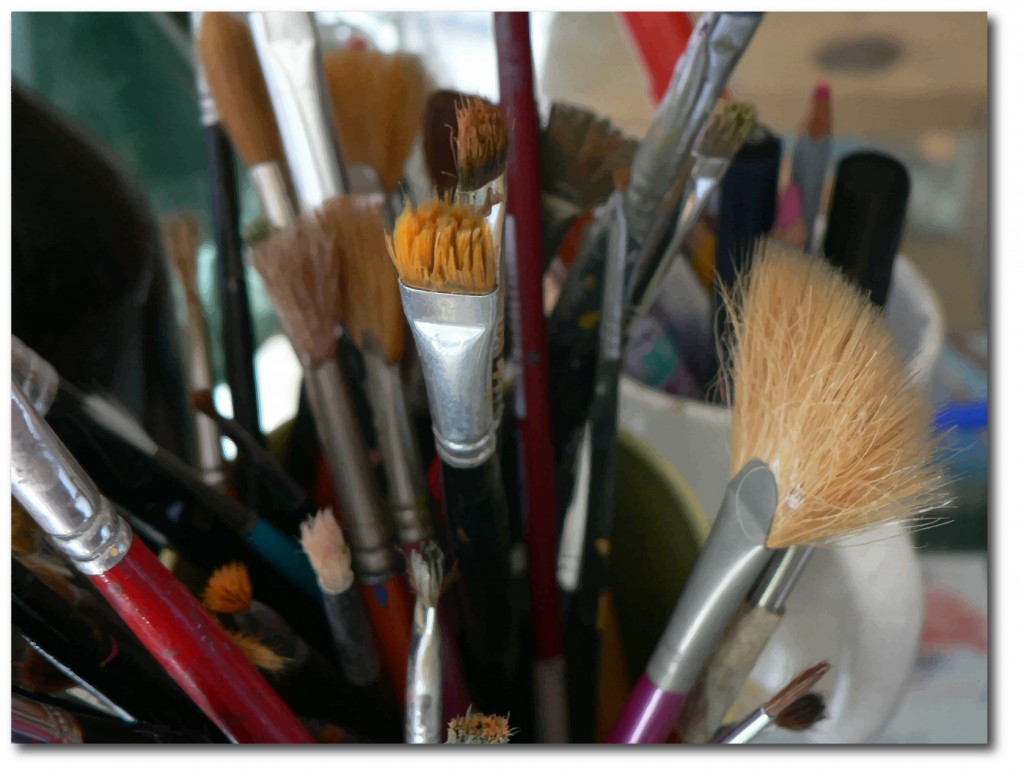
Painting classes and workshops are offered in cities and towns across the country.
 Many classes are available to adults of all ages through continuing education programs, and some classes focus exclusively on teaching seniors to paint. The vast majority of classes and workshops for seniors are offered at a low price, and some are even free. Beginner classes teach basic techniques and can help you become familiar with various styles. Some people prefer to branch out on their own after learning the basics, while others, like Schroeder, prefer to continue their artistic growth under the watch of a teacher or mentor.
Many classes are available to adults of all ages through continuing education programs, and some classes focus exclusively on teaching seniors to paint. The vast majority of classes and workshops for seniors are offered at a low price, and some are even free. Beginner classes teach basic techniques and can help you become familiar with various styles. Some people prefer to branch out on their own after learning the basics, while others, like Schroeder, prefer to continue their artistic growth under the watch of a teacher or mentor.
Whether you join a class or paint on your own, here are a few benefits you might expect:
1. Improved hand-eye coordination.
You wouldn’t normally think of painting as physical exercise, but it offers some of the same hand-eye challenge associated with sports like baseball, golf, and tennis. Whether you’re playing one of these sports or painting, your hand has to react to what your eye sees. In hand-eye sports and in painting, coordination will improve with practice. The more concentration you’re able to give to your painting, the greater the chance you’ll develop a steady hand that responds quickly and reliably to what your eye and brain are telling it. Maybe one day if you’re asked what sport you like to play most, you’ll respond without hesitating, “Painting!”
2. Showing—or finding—your creativity.
Many adults are so occupied making a living and raising a family that thoughts of exercising creativity are limited to making plans for children. But however long creativity has been latent, Delaney suggests that “several painting classes a week, a few hours a day may be enough to unlock a creativity long hidden, either by design or by the trammels of working an 8 to 5 job five days a week.” Others suggest that it takes less time than that—just making painting part of your new routine—to unlock your creativity. If you already have outlets for creativity, taking a step to painting should be easy.
3. Giving your retirement a purpose …
Or a second or third purpose. In a recent blog post, I wrote about the importance of having a purposeful retirement, and listed some activities that many seniors find fulfilling and consistent with purposes they’ve set for retirement. To that list—which included such activities as volunteering, tutoring, and starting a club—you can add painting. Painting can be an all-encompassing activity, one that helps address your mental, social, and emotional needs and well-being. It gives you the chance to stay sharp and focused, and it allows you to set reasonable goals with the expectation of improvement and not decline. Whether you’re looking for a purpose or just an activity that’s consistent with a purpose you’ve already set, you may want to find out for yourself why many older adults swear by painting.
4. The finished product.
This is the payoff … something you’ve created from nothing. Regardless of your skill level, you’ve finished what you started … made it to the finish line … earned the prize—and tomorrow you can start it all over again with a new painting. Whether or not you’re ever able to sell a painting, you’ll definitely create something of value for friends and family members. Perhaps, as Jayne Schroeder has done, you’ll develop a habit of giving your paintings to people who are sure to treasure them. Perhaps you’ll donate your latest work to a fundraiser or offer to adorn that drab, empty wall in your community clubhouse with an original painting. Maybe you’ll choose instead to hang on to all your finished paintings so that you can have an exhibition of your work in a few years. But however you look at it, finishing paintings you start from scratch will be an accomplishment to be proud of.
